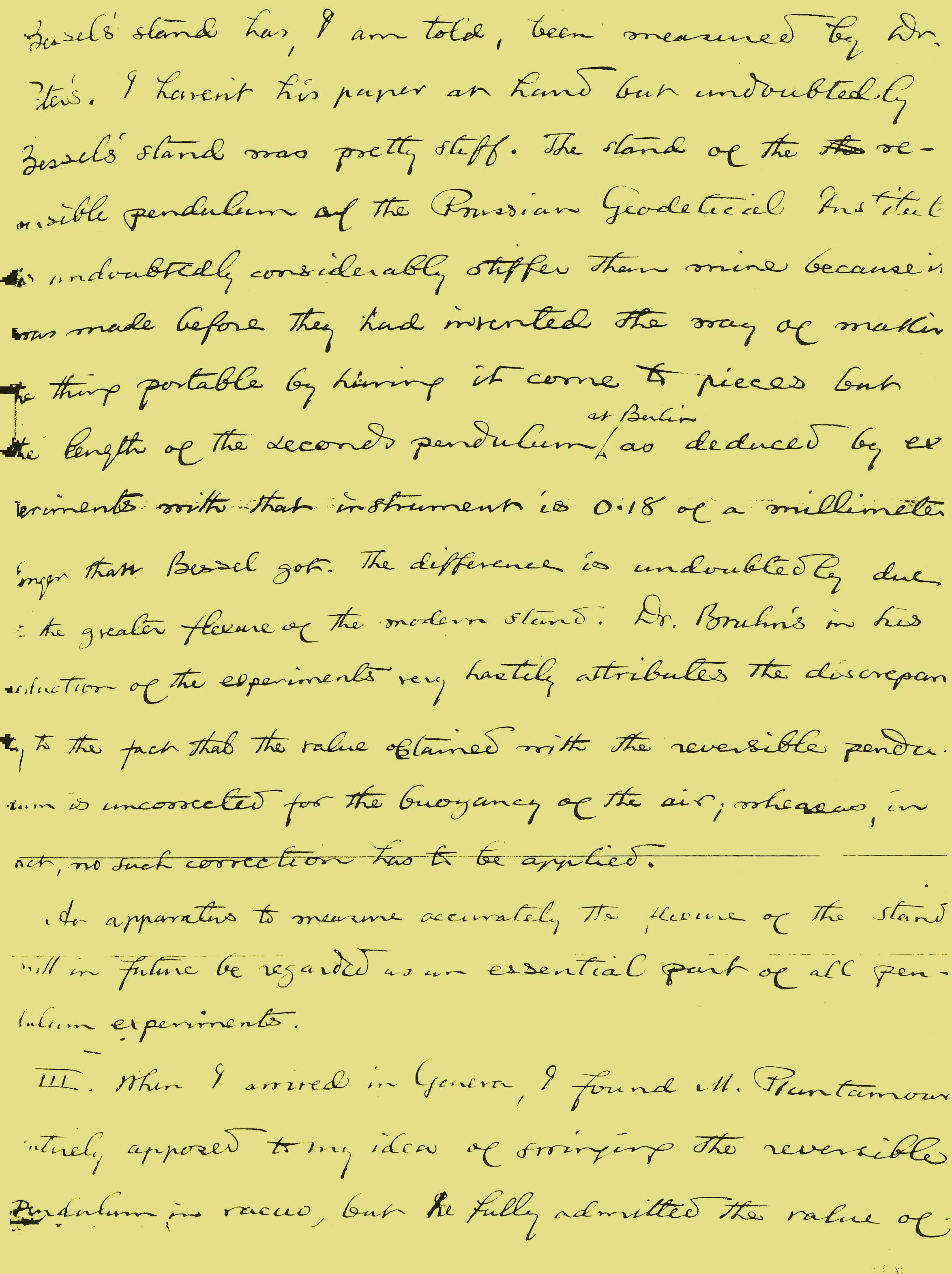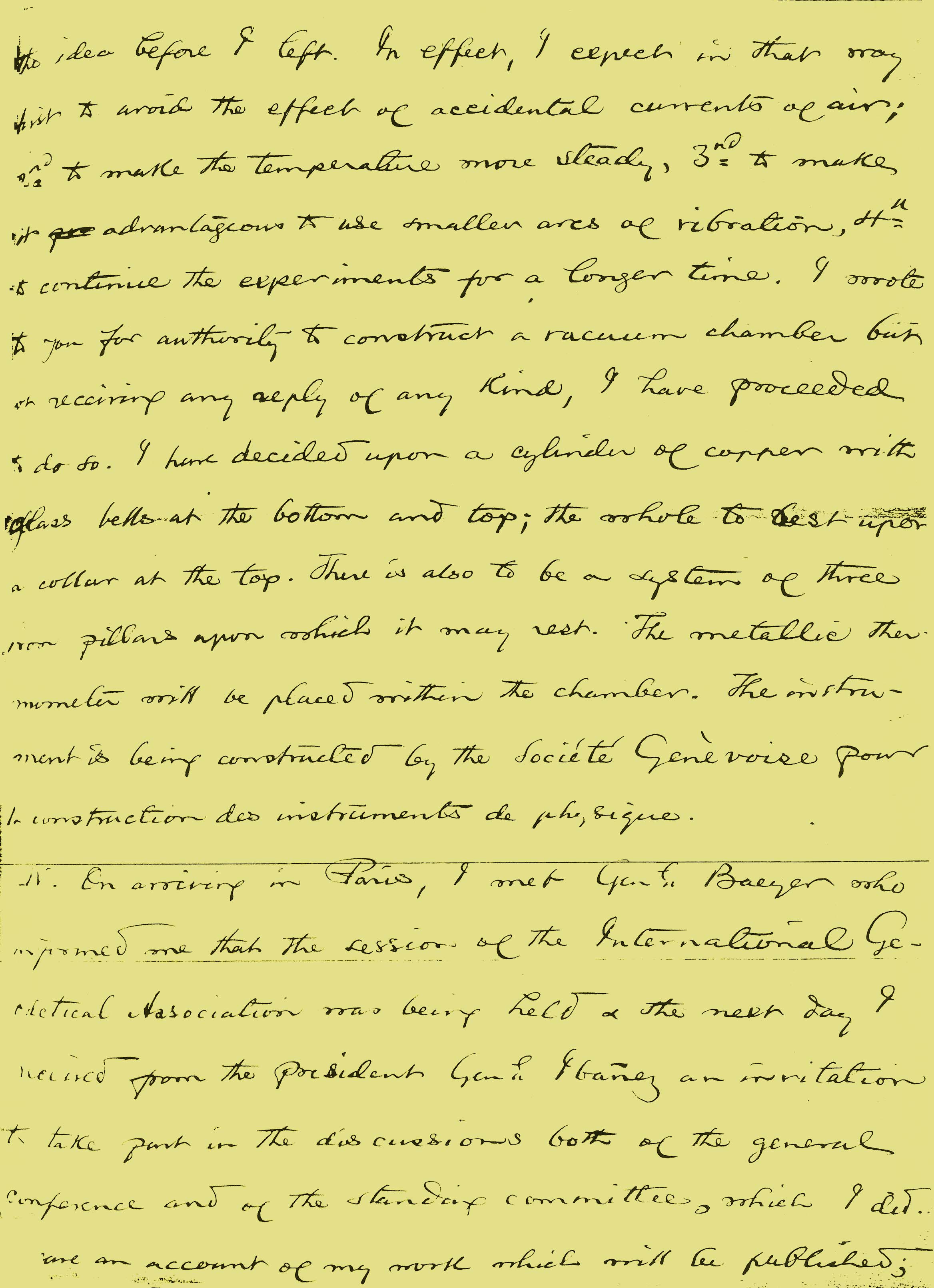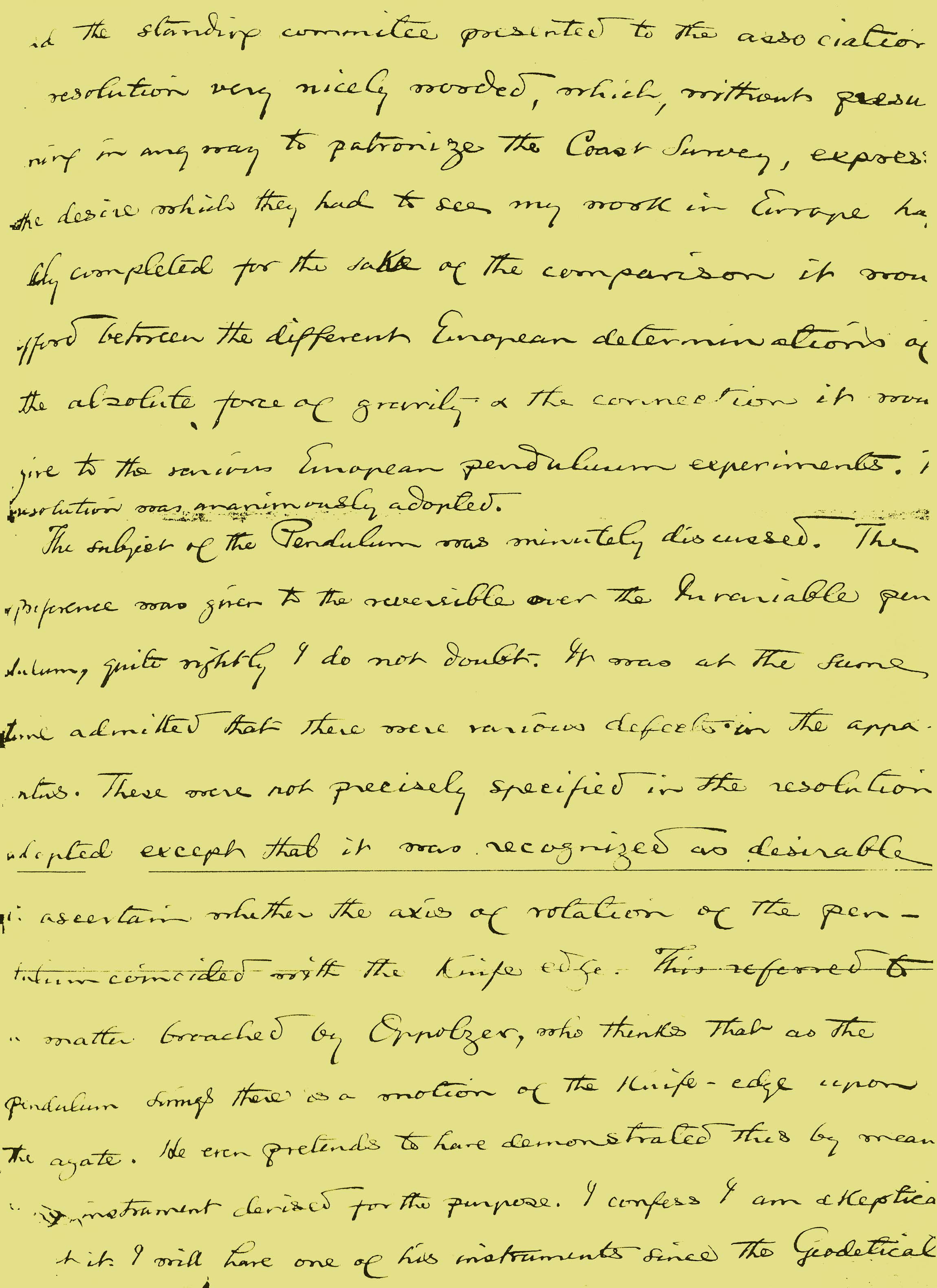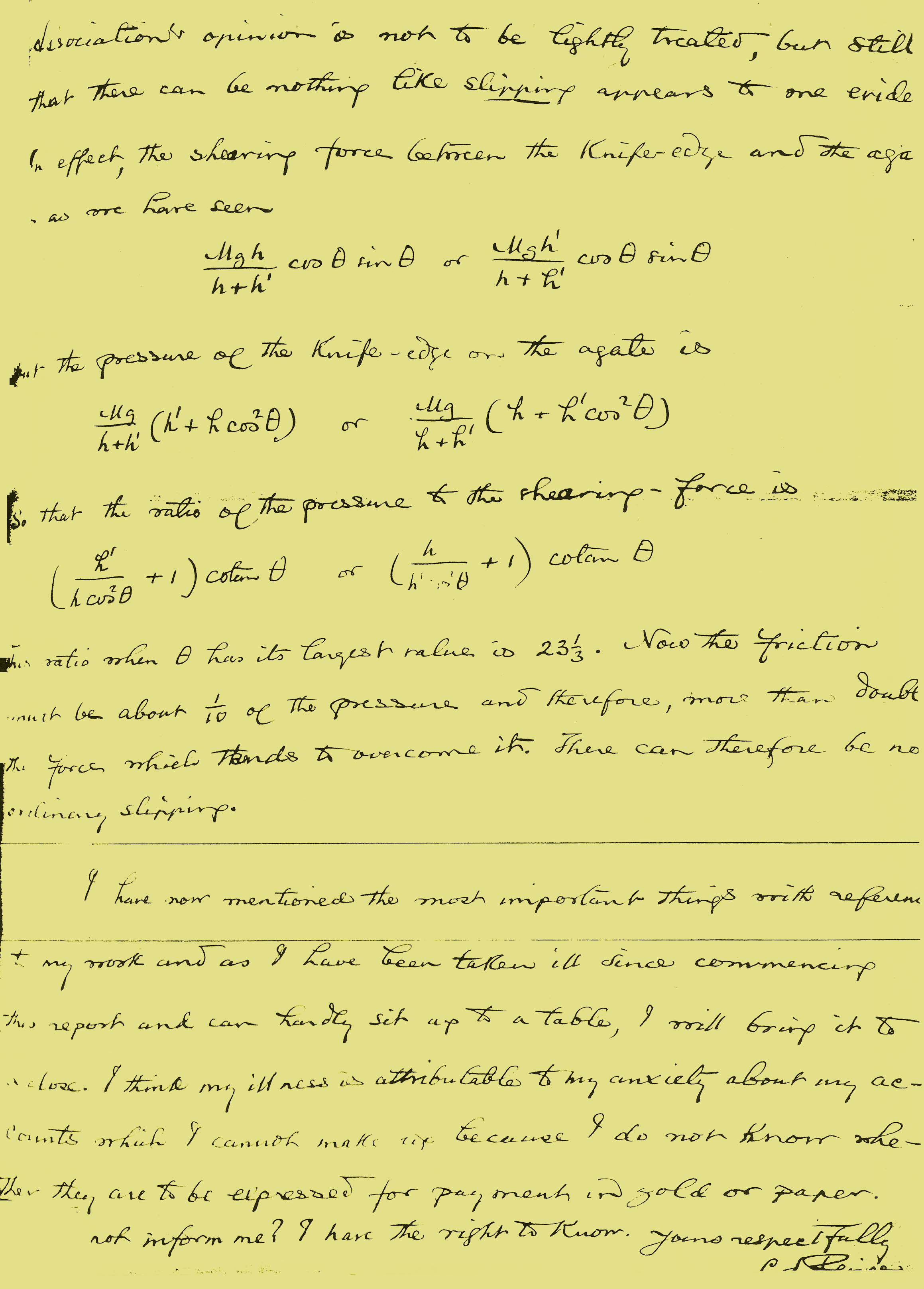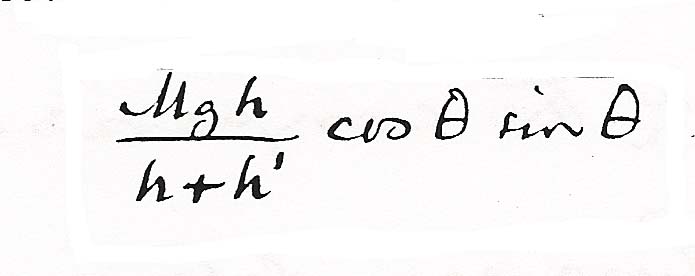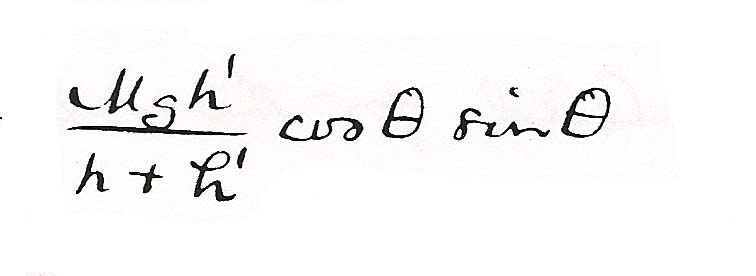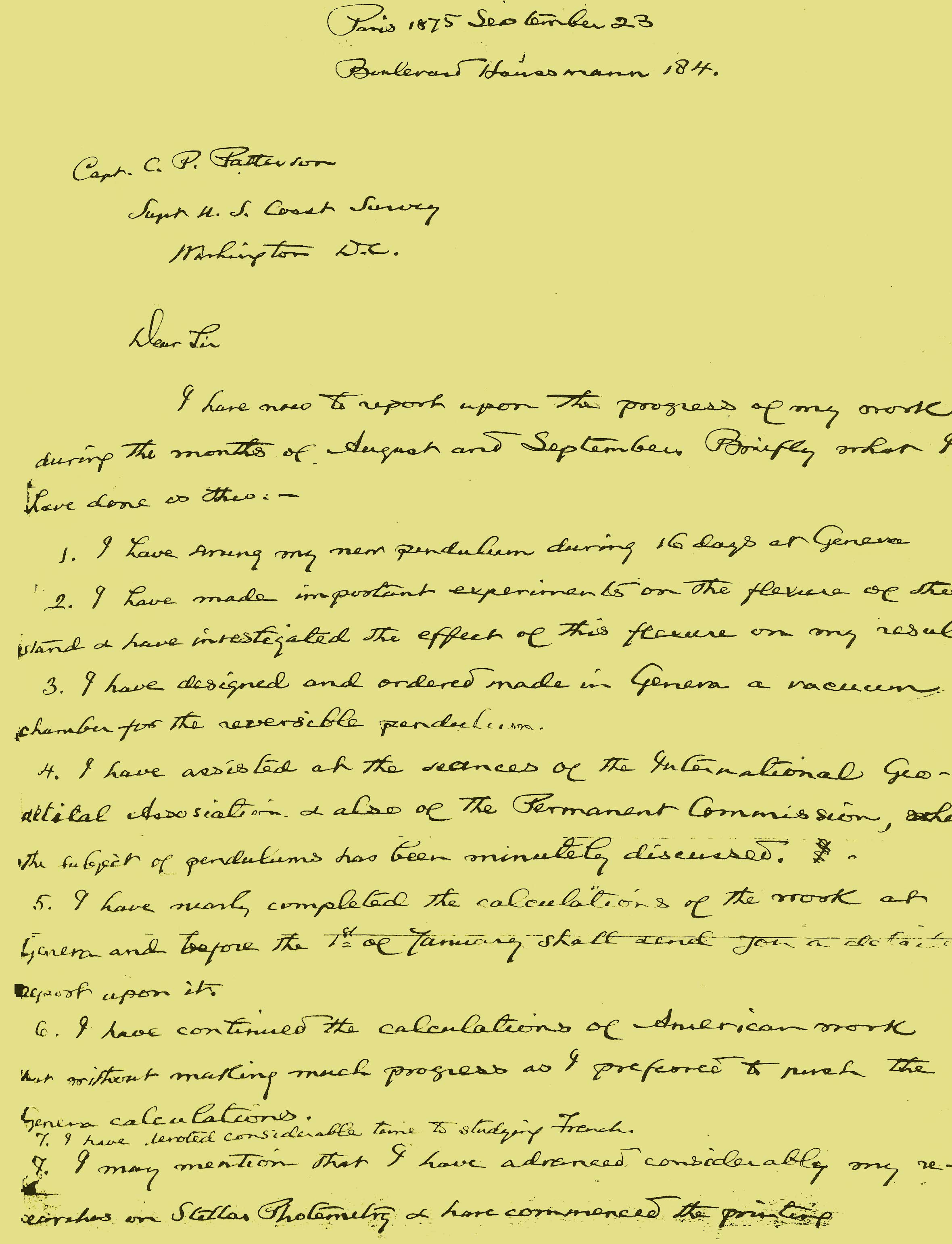
|
Paris 1875 September 23
Boulevard Haussmann184 Dear Sir I have now to report upon the progress of my work during the months of August and September. Briefly what I have done is this: 1. I have swung my new pendulum during 16 days at Geneva. 2. I have made important experiments on the flexure of the stand & have investigated the effect of this flexure on my result. 3. I have designed and ordered made in Geneva a vacuum chamber for the reversible pendulum. 4. I have assisted at the seances of the International Geodetical Association & also of the Permanent Commission, where the subject of pendulums has been minutely discussed. 5. I have nearly completed the calculations of the work at Geneva and before the 1st of January shall send you a detailed report upon it. 6. I have continued the calculations of American work but without making much progress as I preferred to push the Geneva calculations. 7. I have devoted considerable time to studying French. 8. I may mention that I have advanced considerably my researches on Stellar Photometry & have commenced the printing. |
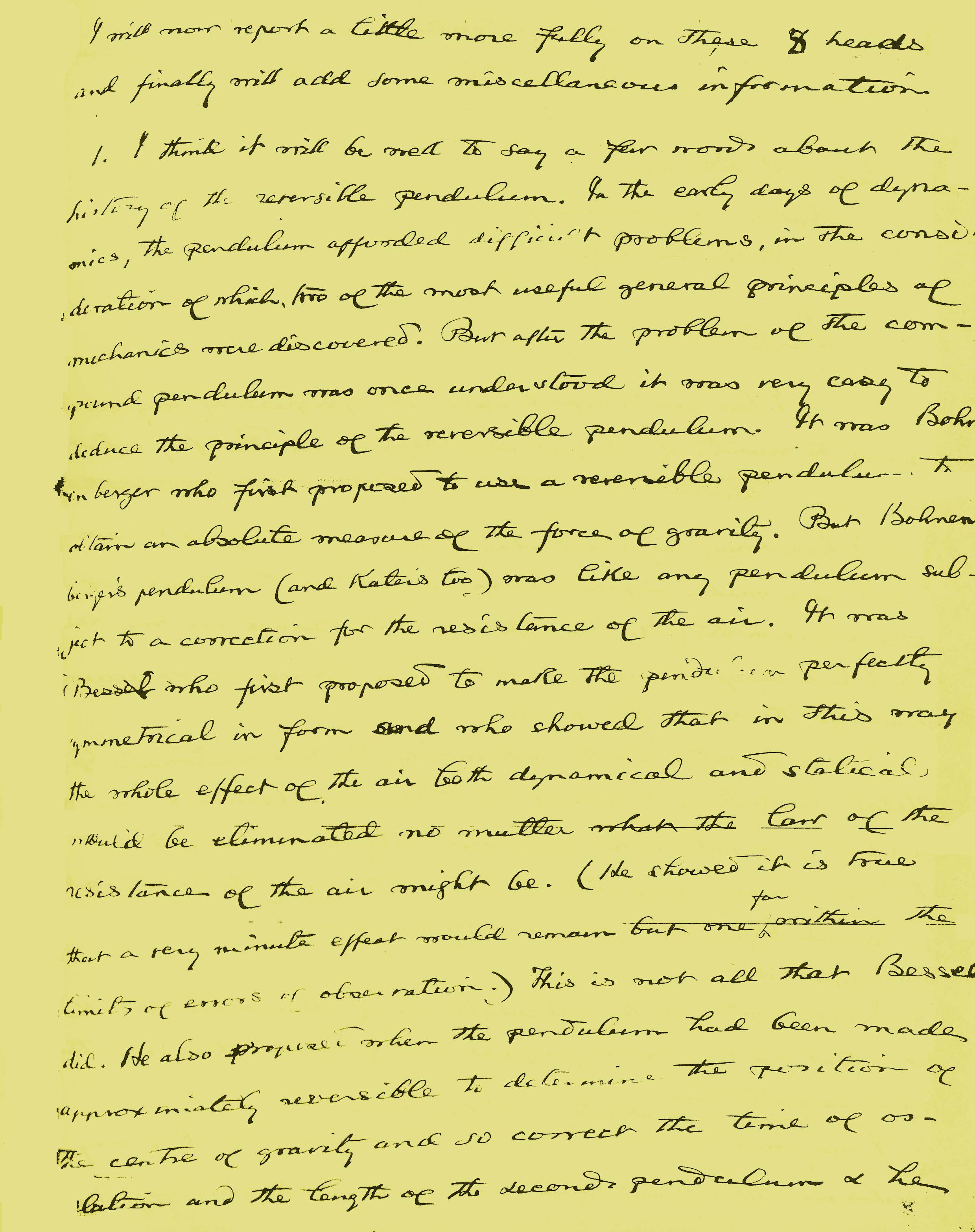
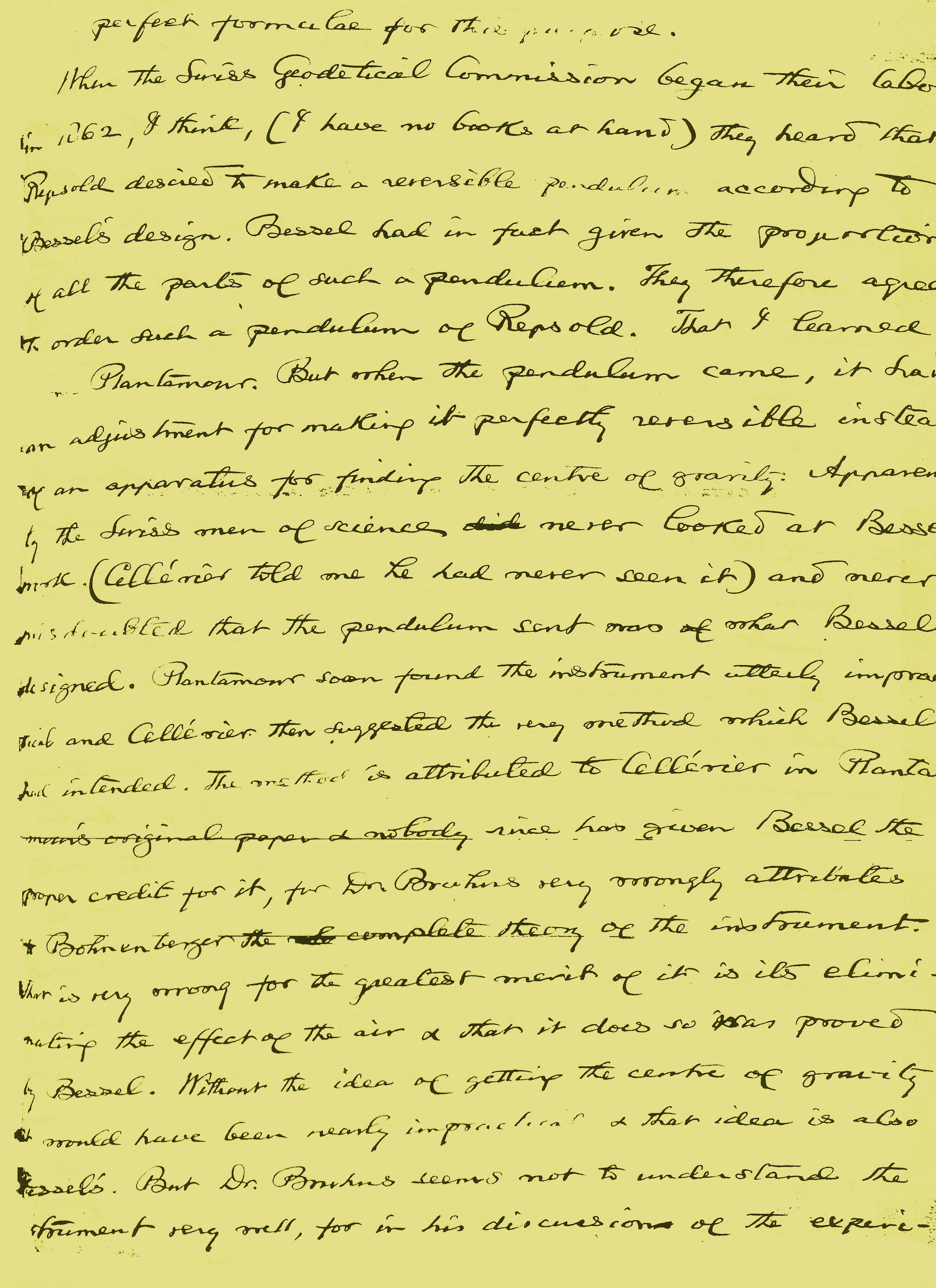
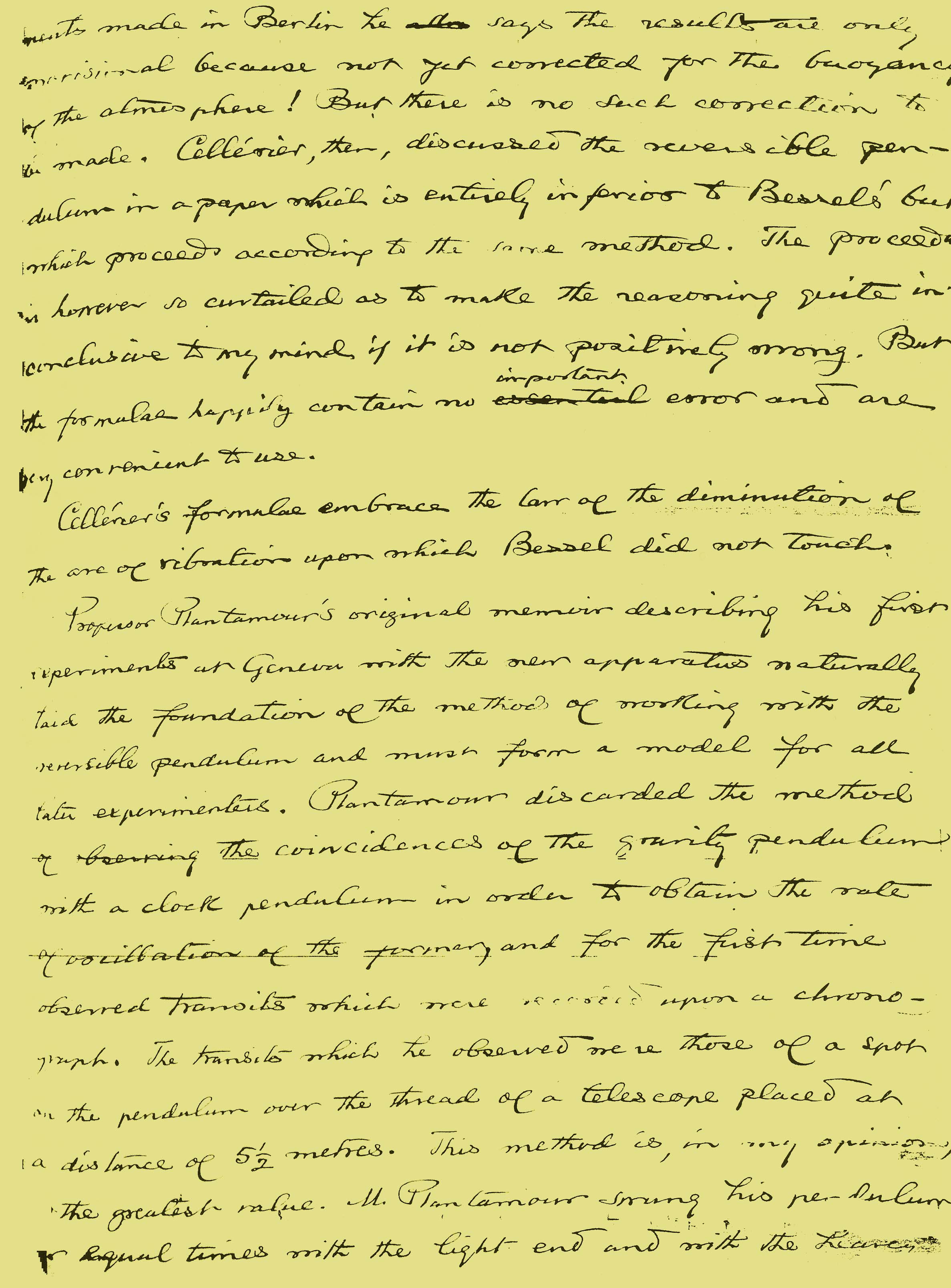
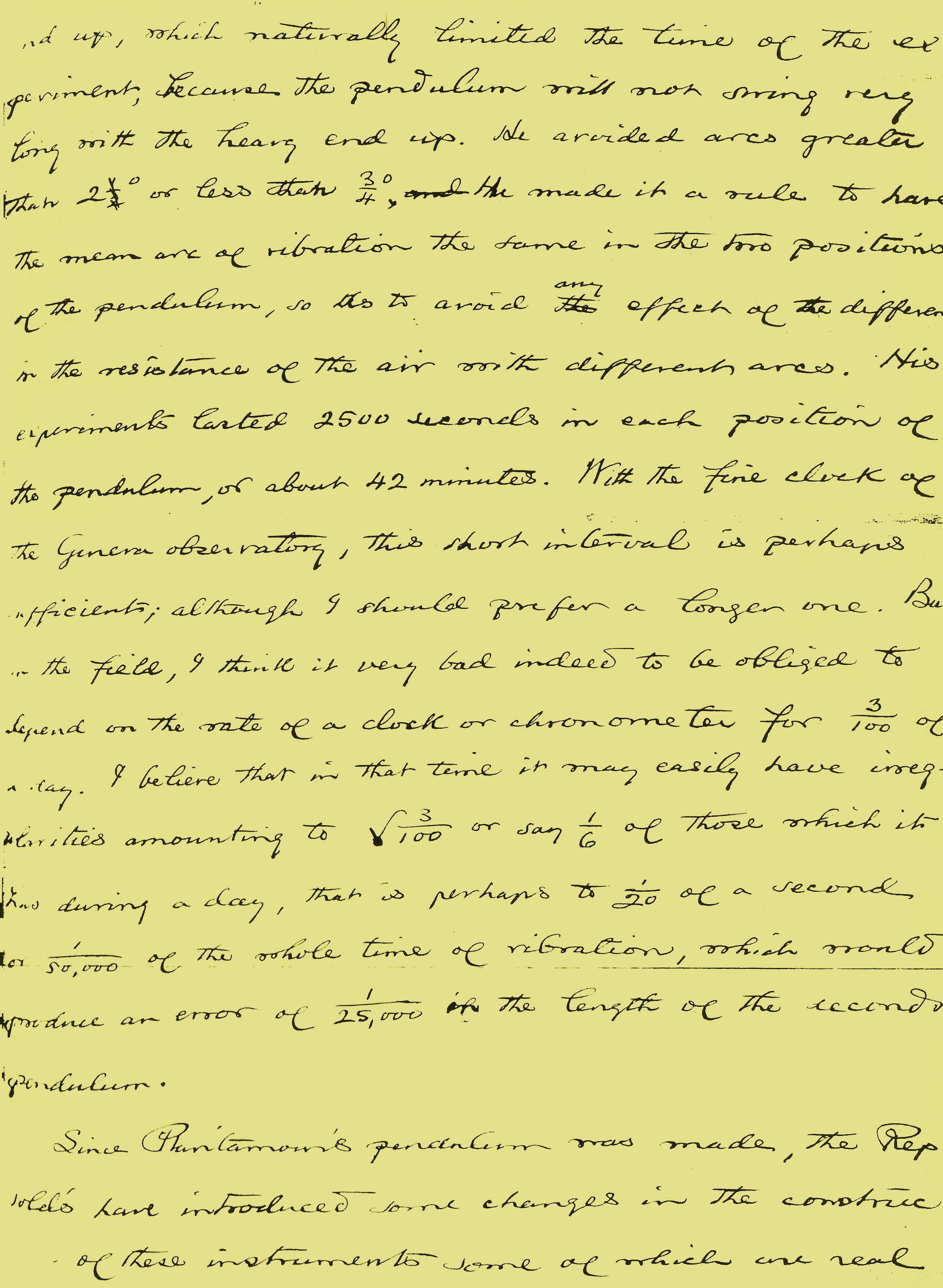
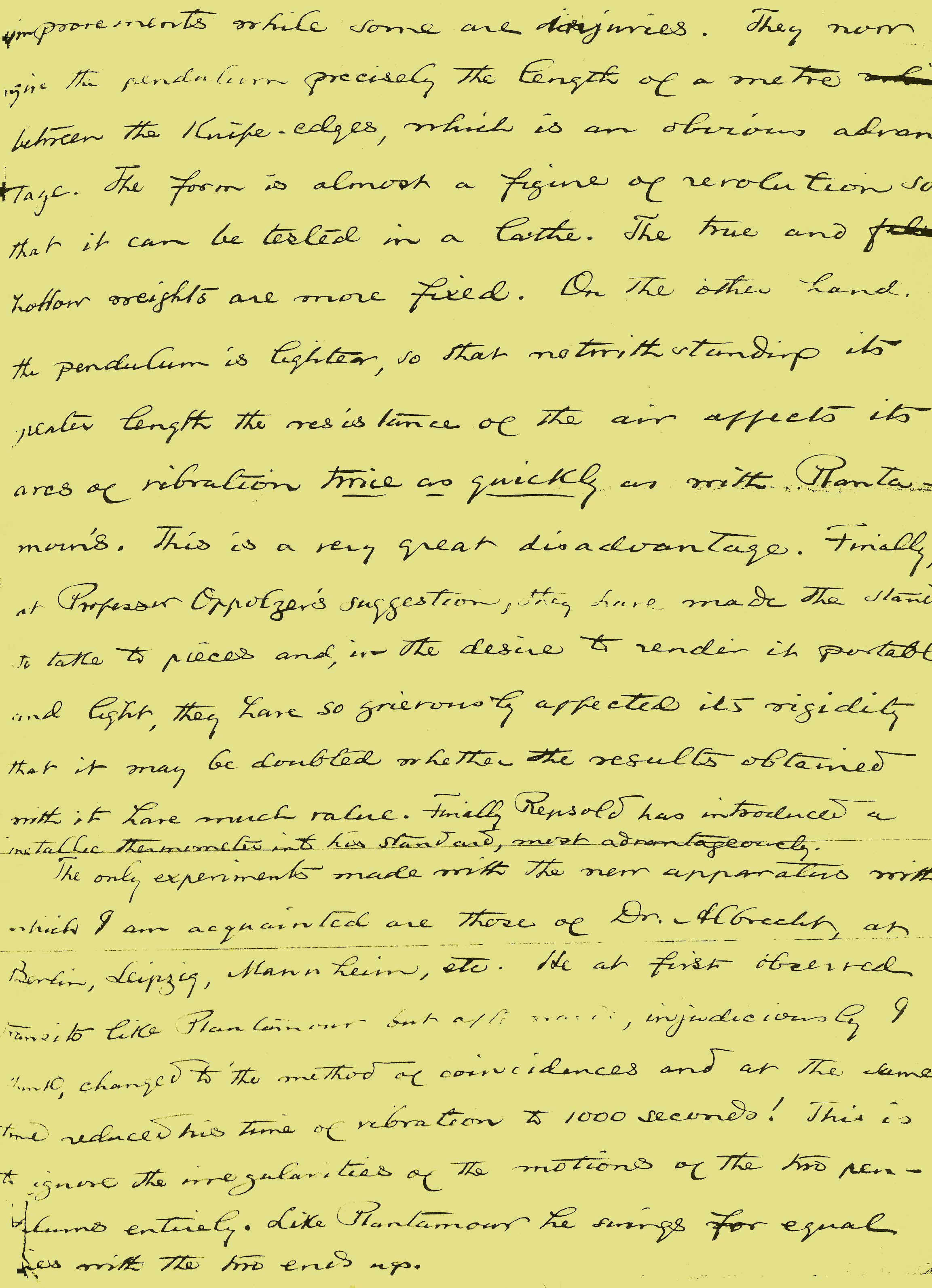
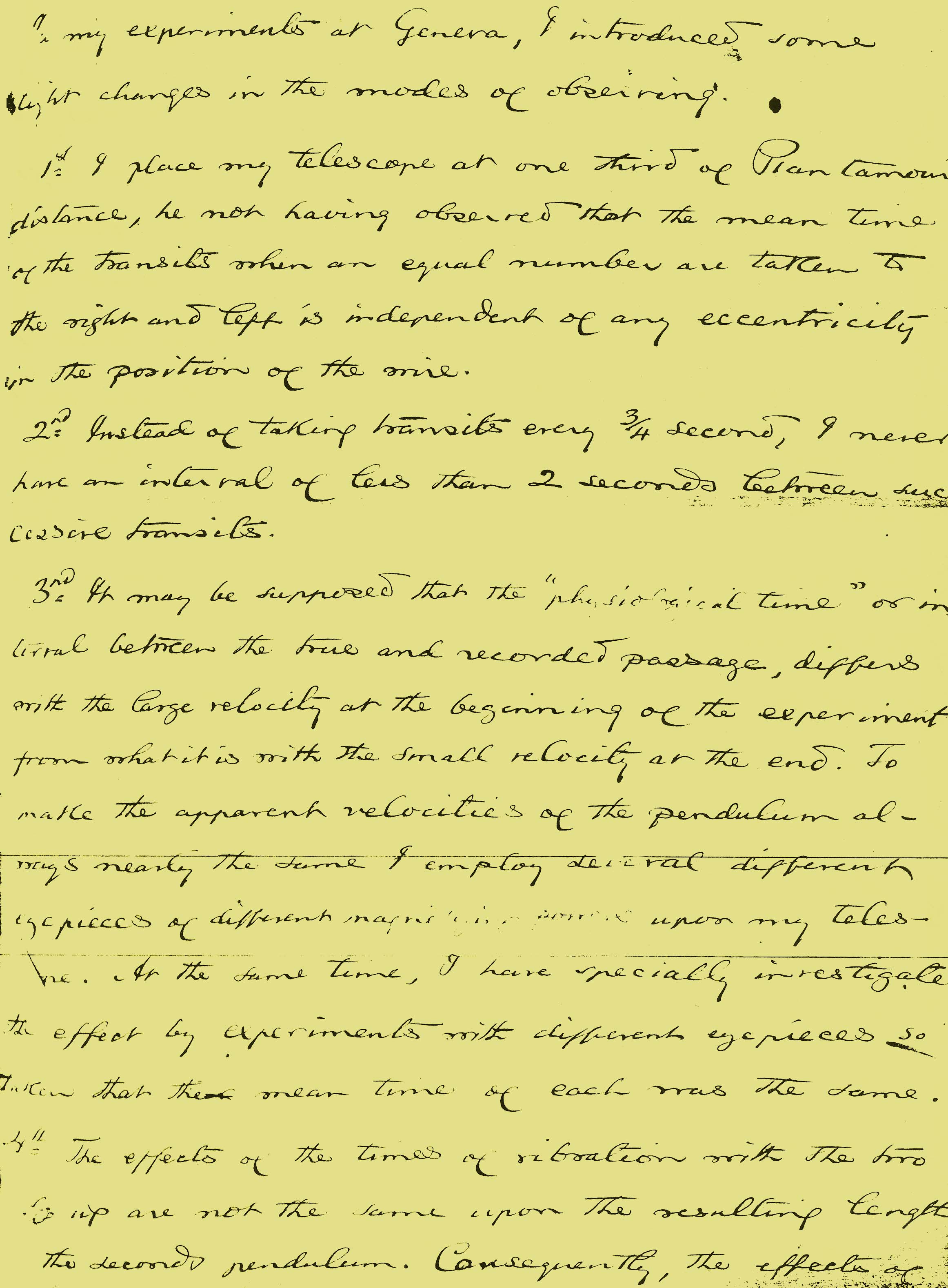
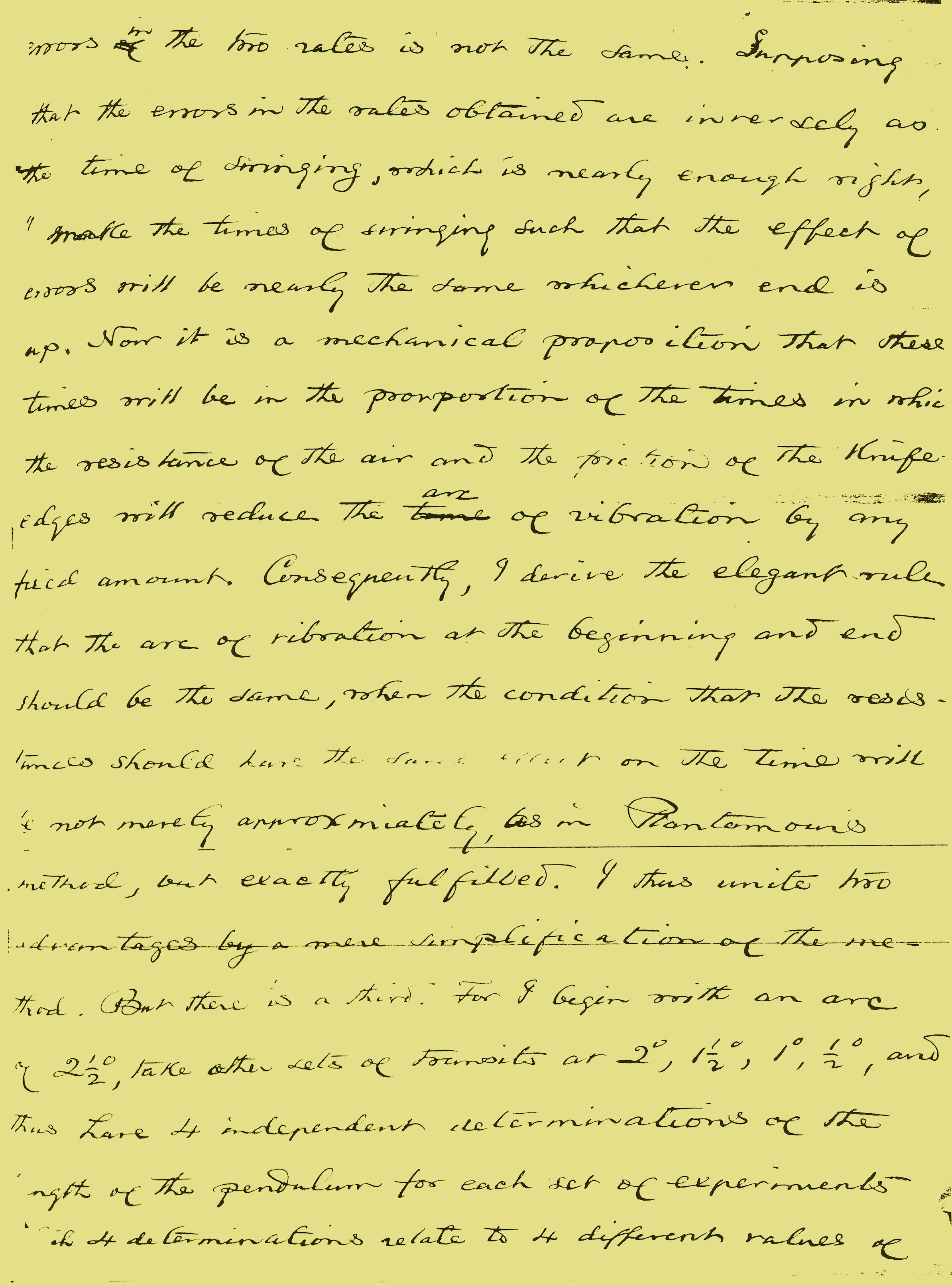
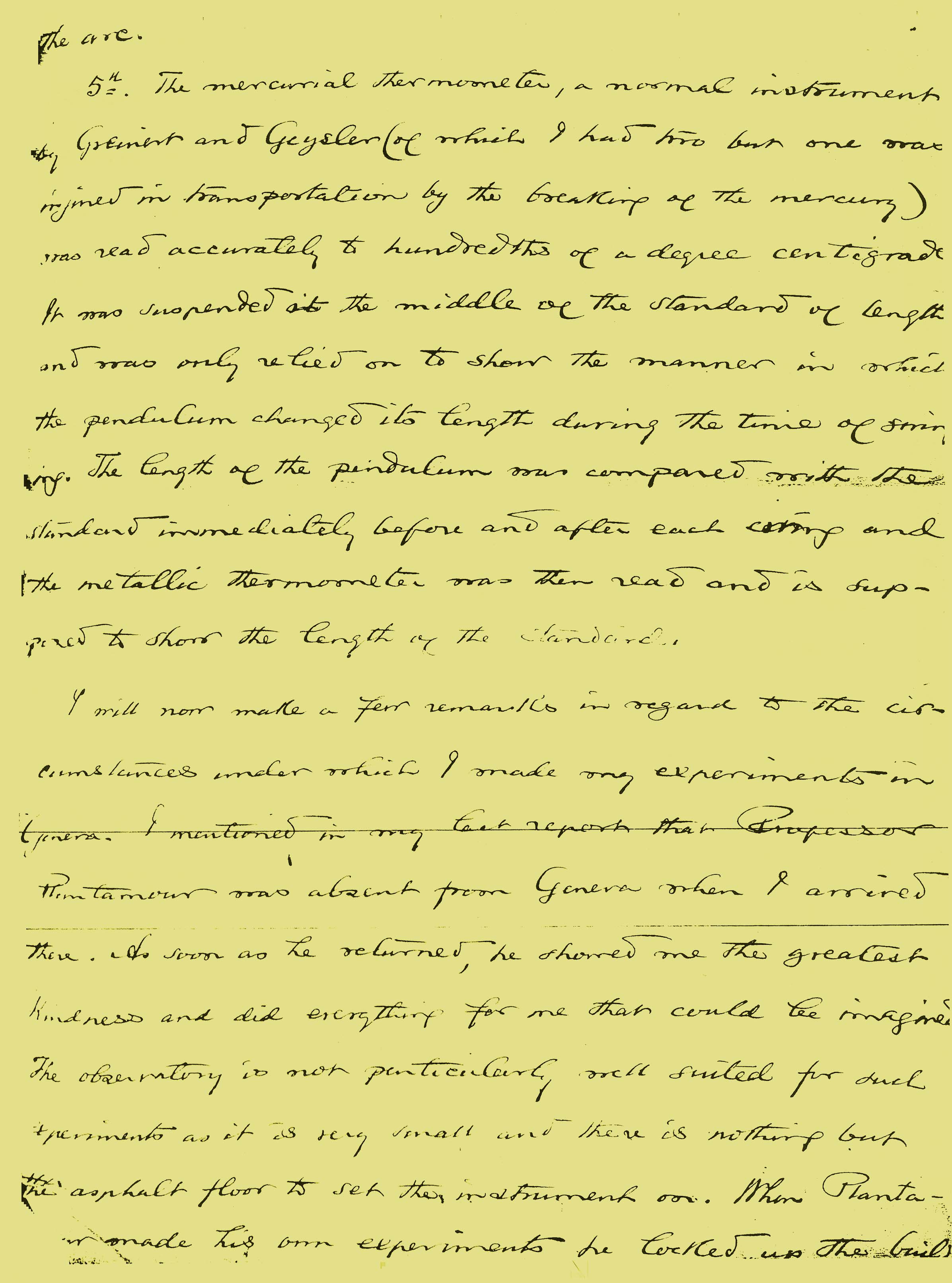
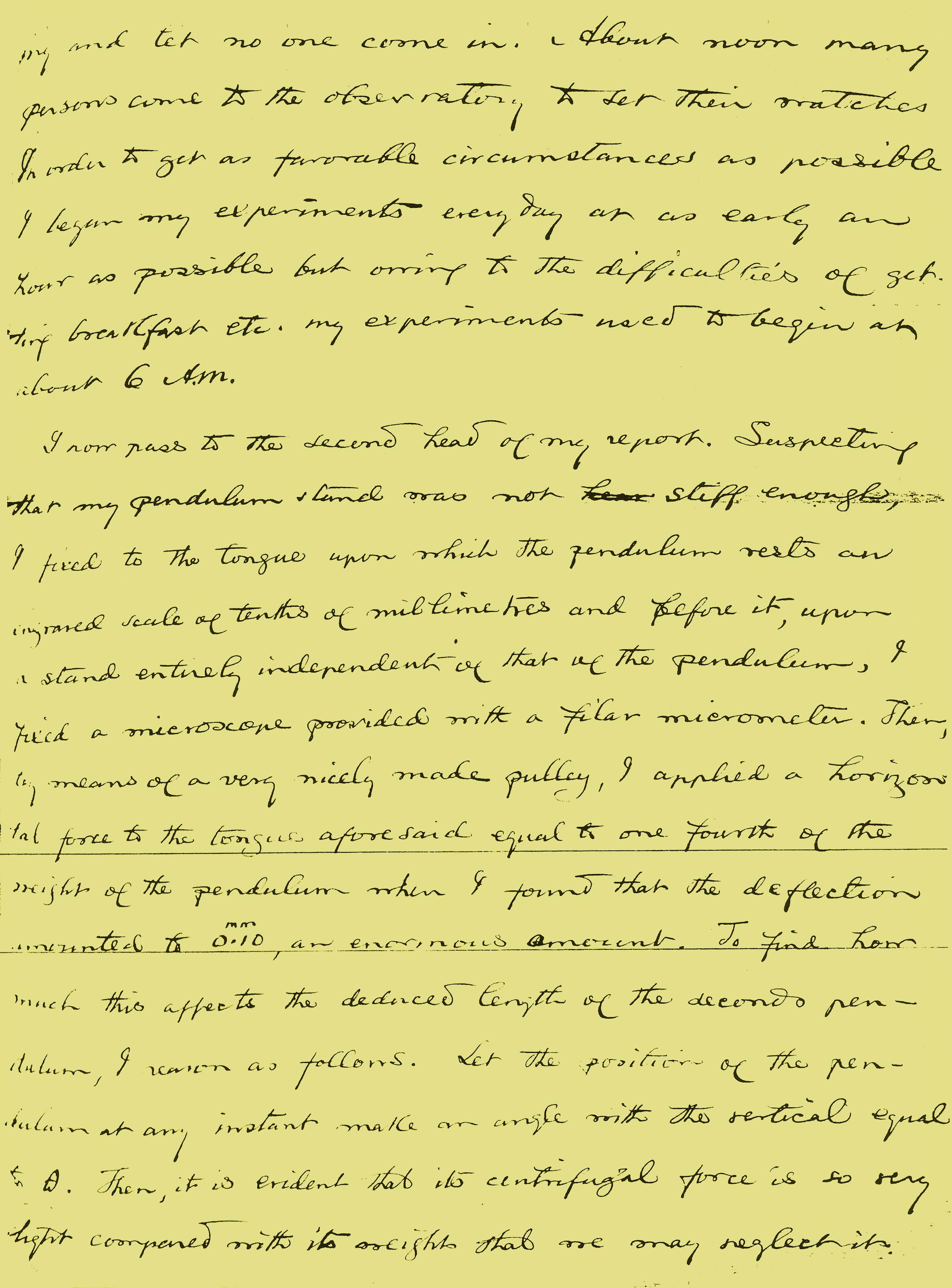
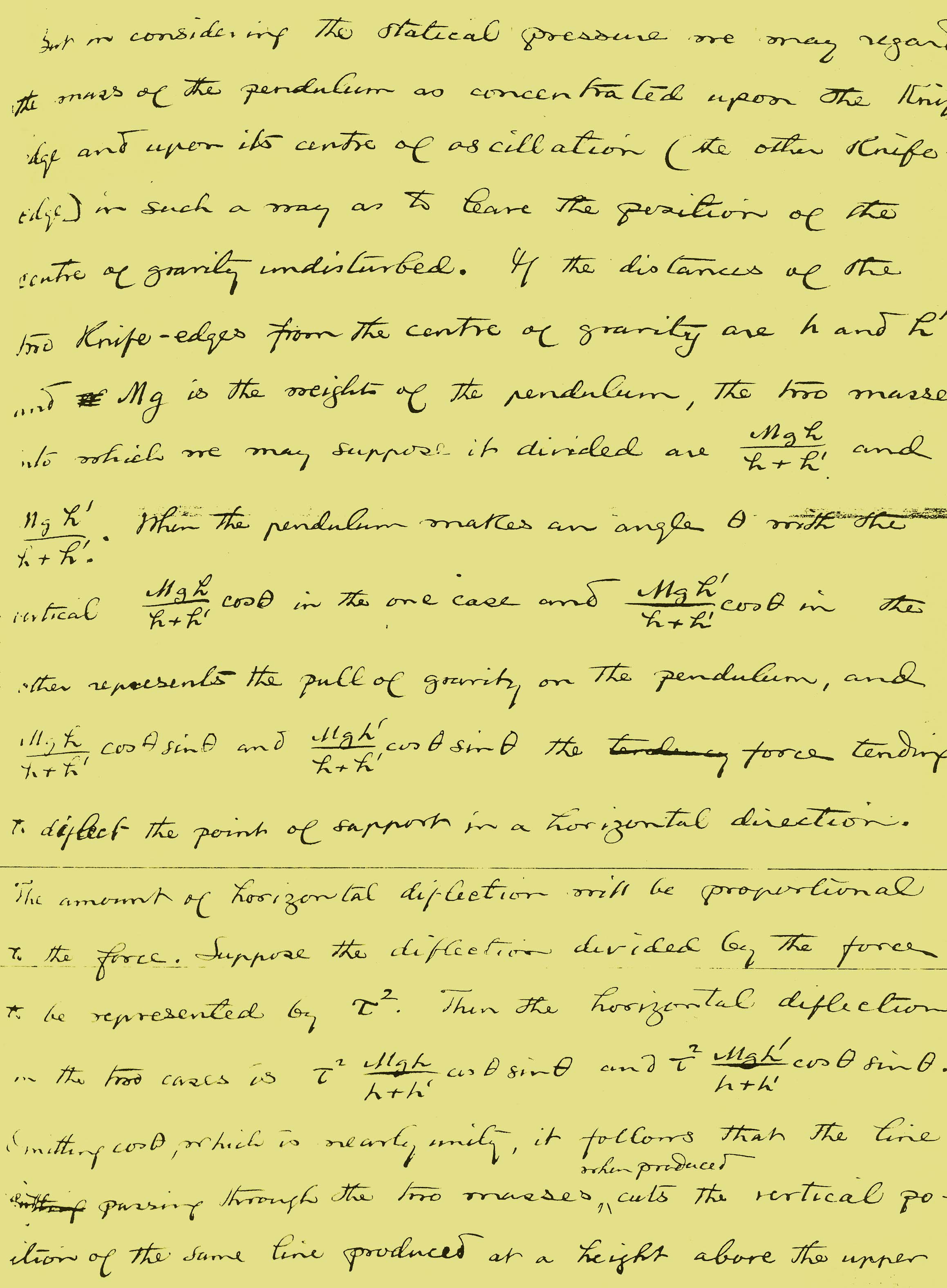
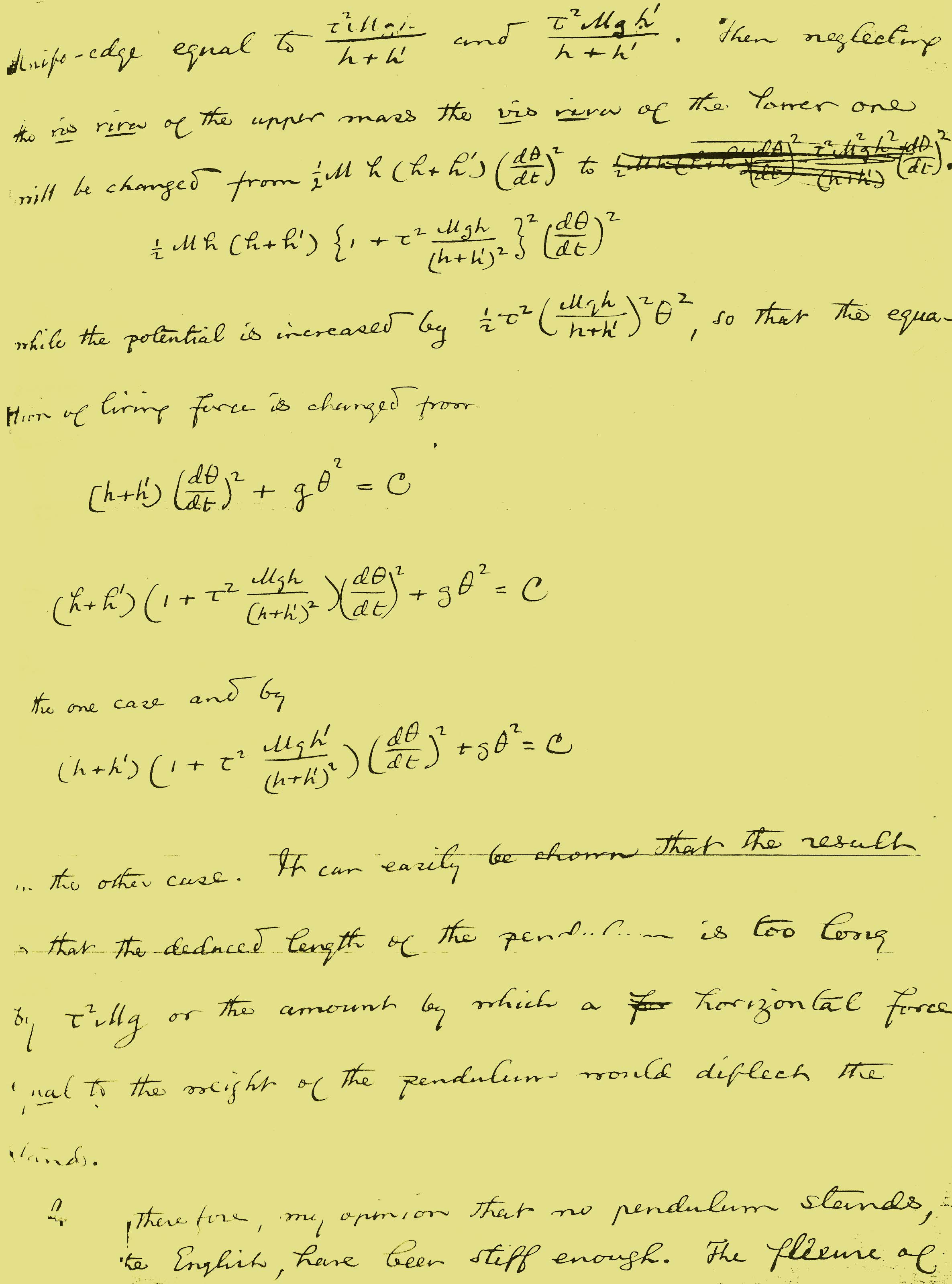
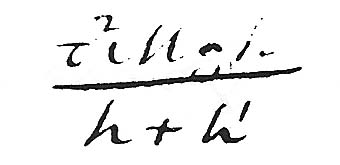 and
and 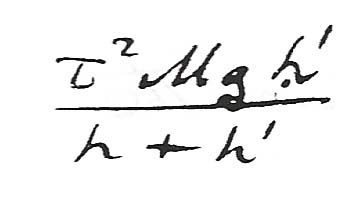 . Then neglecting the vis viva of the upper mass the vis viva of the lower one will be changed from
. Then neglecting the vis viva of the upper mass the vis viva of the lower one will be changed from 